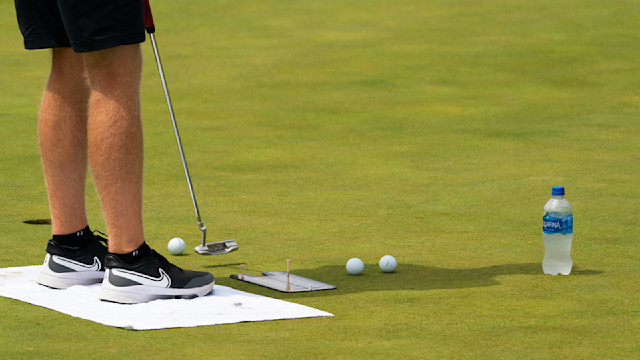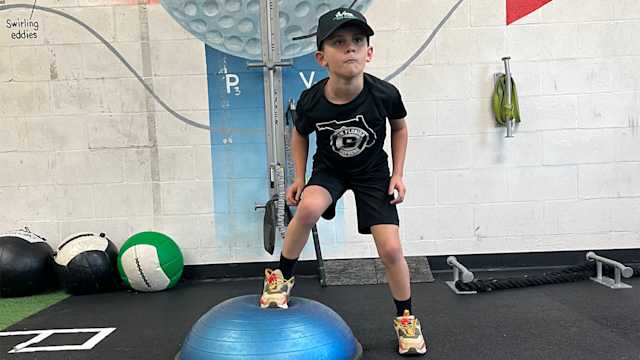quick coaching
How to Prevent Golf Injuries This Season
By Brendon Elliott, PGA
Published on
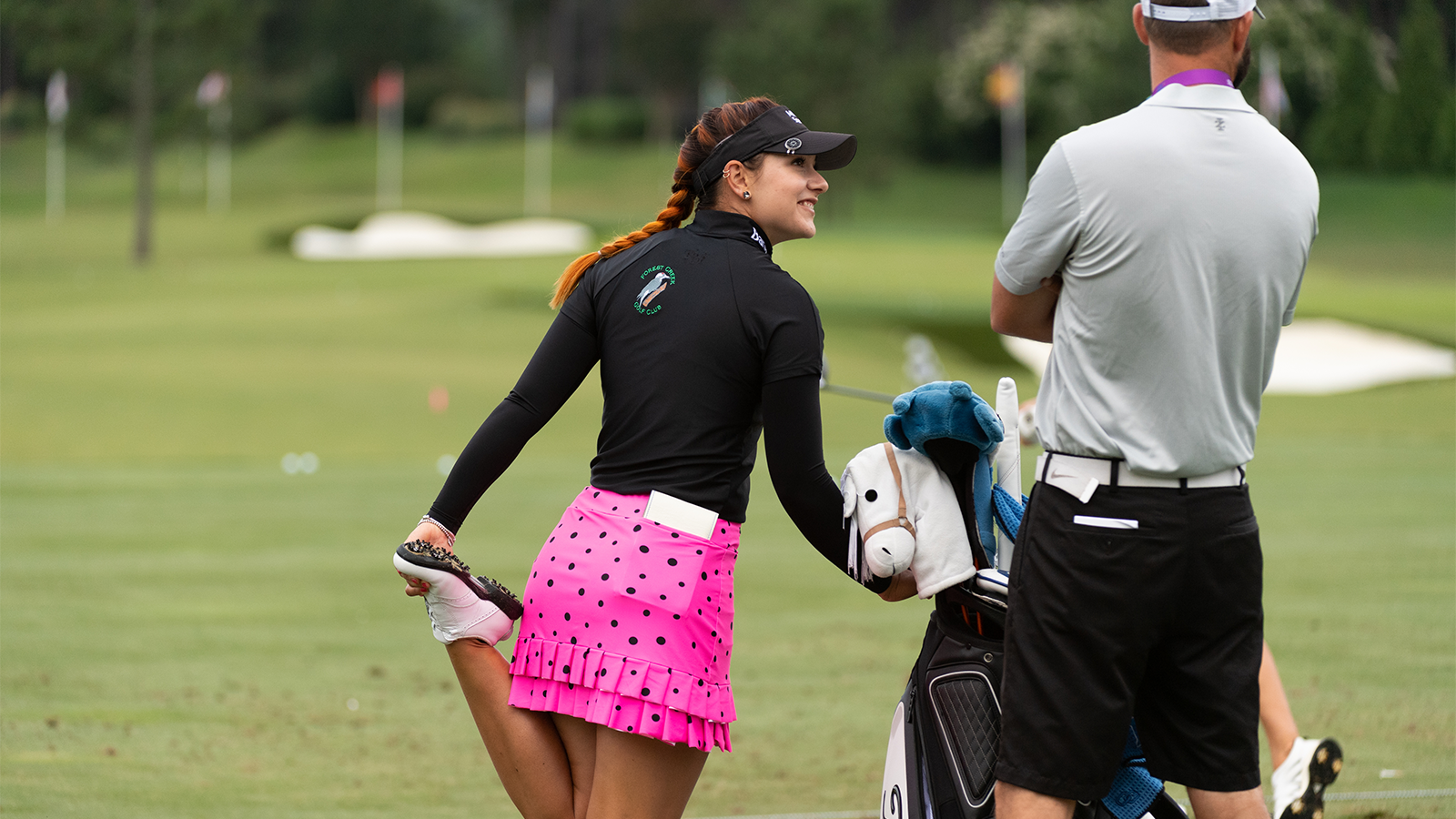
Ana Belac of Slovenia stretches at the driving range during the first round for the 2021 KPMG Women's Championship at the Atlanta Athletic Club on June 24, 2021 in Johns Creek, Georgia. (Photo by Montana Pritchard/PGA of America)
We tend to only think of injury in a reactionary way. An injury occurs, then we deal with it. In many cases, especially as it pertains to the most common injuries in golf, we could very much prevent them from happening through both knowledge and practice.
As I was exploring injury prevention for golfers, I was connected with Dr. Michael D. McCleary of the Orlando Orthopaedic Center, who is board certified in Pediatrics and Primary Care Sports Medicine.
Below, Dr. McCleary points out some of the most common golf injuries, as well as some tips golfers can take to avoid them.

Dr. Michael D. McCleary of the Orlando Orthopaedic Center with the center's foundation lead Andy Reber and his son.
What are the most common injuries seen in golfers?
Dr. McCleary: Overuse injuries are the most common. Pain in the lower back (muscle strains, disc injuries), hip, knee (especially meniscus injuries), elbow (“golfer’s elbow,” which involves overuse of the tendons near the elbow), wrist (tendinitis), and shoulder (including rotator cuff injuries) are all problems golfers experience. On the course, strains, sprains, and fractures can occur from falls while walking on uneven terrain. Environmental conditions can also result in sunburn, heat illness, and dehydration, especially in warmer climates.
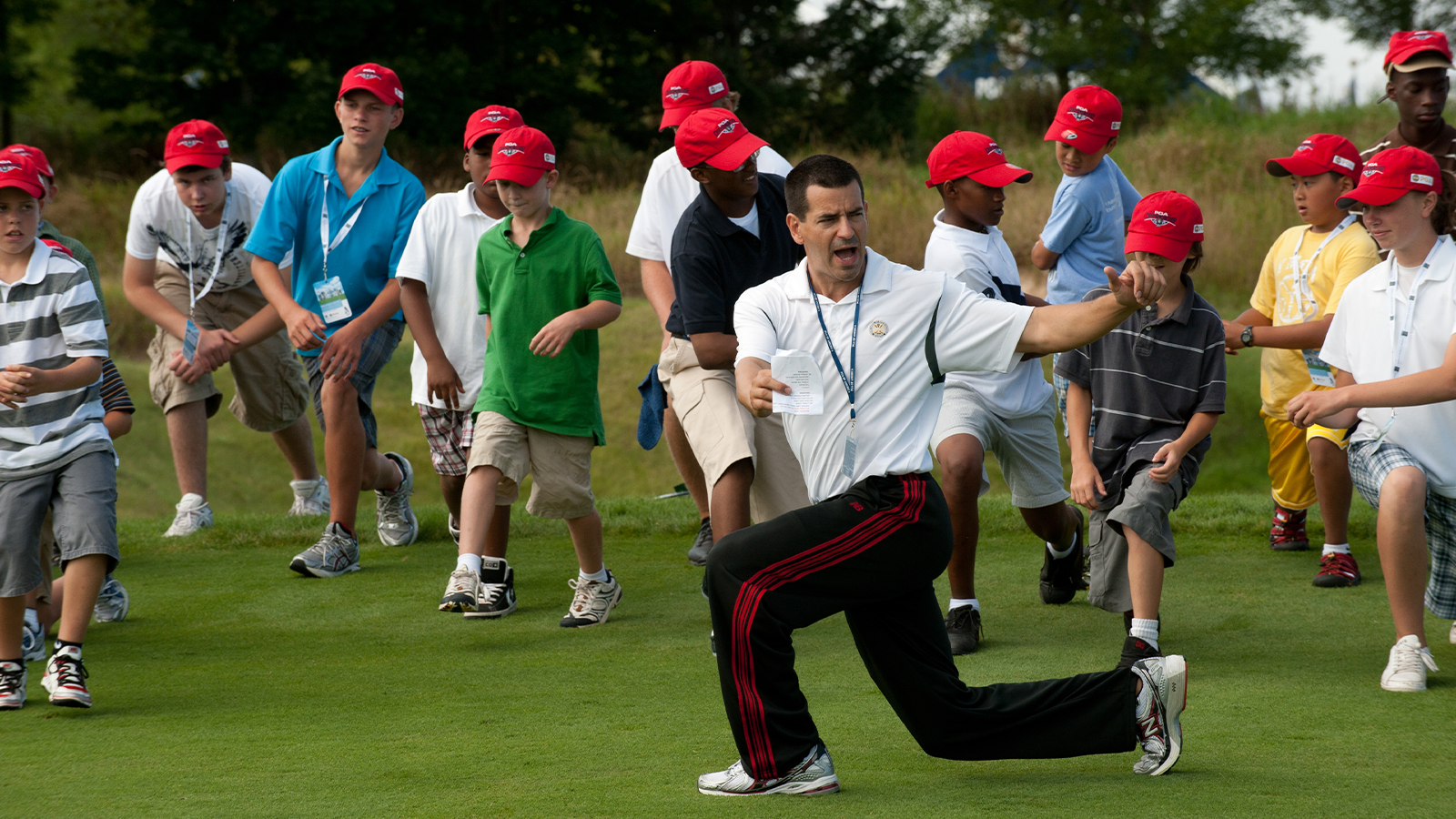
David Donatucci working with Juniors on exercises during a youth clinic. (Photo by Montana Pritchard/The PGA of America)
What injuries do younger golfers have the potential to experience?
Dr. McCleary: Younger golfers are also susceptible to overuse injuries, but often for different reasons. Children are typically still growing, and their growing bones contain growth plates, which are more vulnerable to injury than soft tissues (ligaments, tendons), so they may have growth plate injuries to the elbow, shoulder and wrist. In addition, younger athletes rarely experience disc issues in the low back, but commonly develop stress fractures in the growing spine. One area of concern for younger golfers is golf car injuries, the majority of which occur while riding as a passenger and falling out of the car. Not keeping feet fully inside the cart can result in ankle and leg injuries, too.
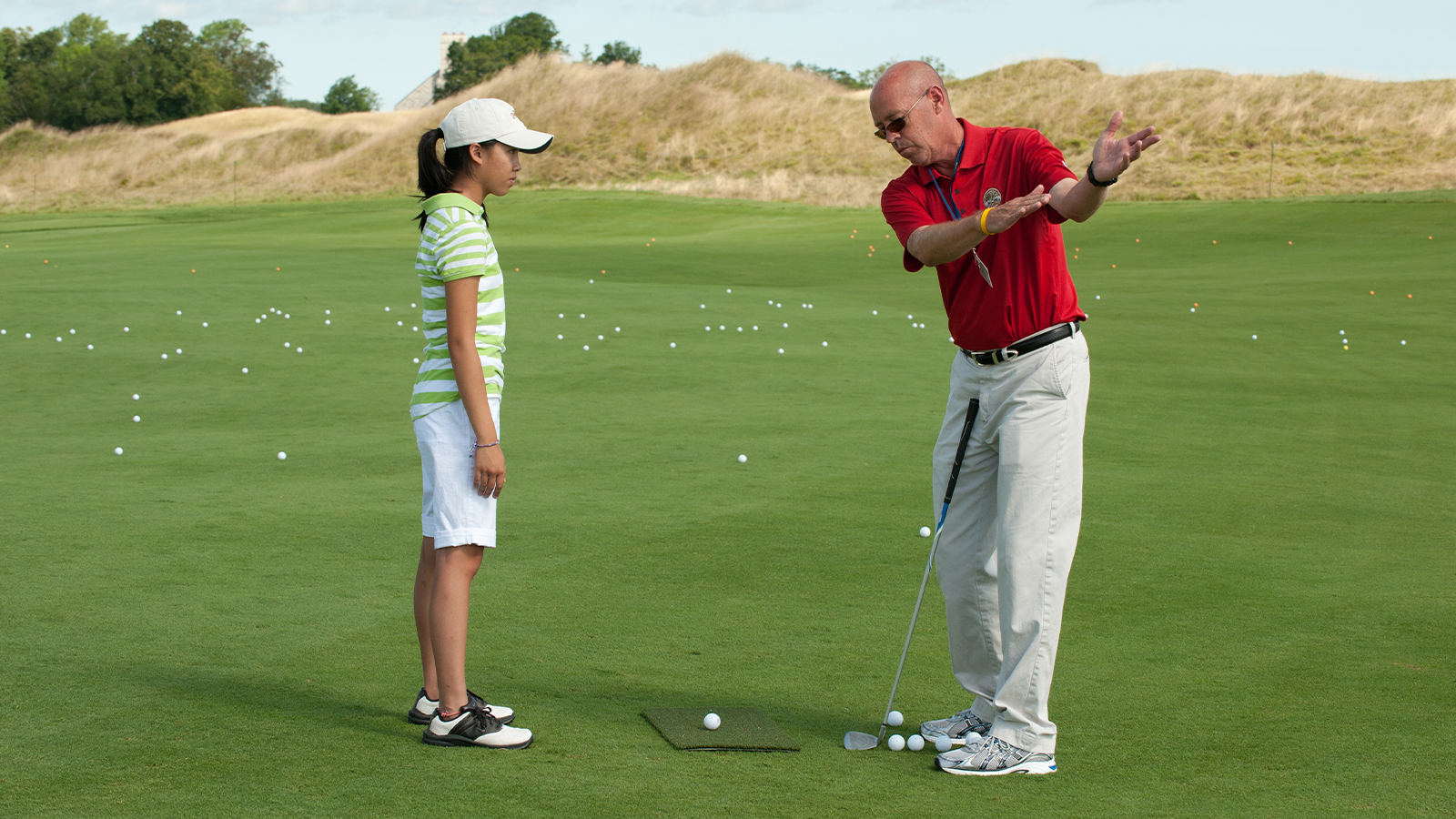
A Wisconsin Section PGA Professional works with a junior golfer on her form during a youth clinic. (Photo by Montana Pritchard/The PGA of America)
What are three preventative measures golfers of all ages can take to avoid injury in golf?
Dr. McCleary: No. 1, since the majority of golf injuries are due to overuse, prevention should be focused on limiting repetitive activity and preparing the body for the demands of golf. Training/practice should be planned out to limit excessive number of swings, especially full swings. Learning proper swing mechanics can limit strain on joints and the spine.
No. 2 is a proper warm up. Stretching before practice and rounds is essential. Away from the course, a program of core strengthening, flexibility training, and strengthening can decrease the risk of injury.
No. 3 is considering general safety measures, which a lot of people forget. Using correctly sized clubs should be considered and if a golfer is carrying clubs, using a bag with double shoulder straps can limit uneven strain on the back. Young golfers need to keep a safe distance from other players to reduce the risk of being struck by a ball or club, too. Golfers also need to be aware of inclement weather, especially lightning, and know when and how to avoid it. Lastly, sunscreen should be applied and (re-applied) to provide adequate protection, and proper hydration during rounds and training sessions is vital.

